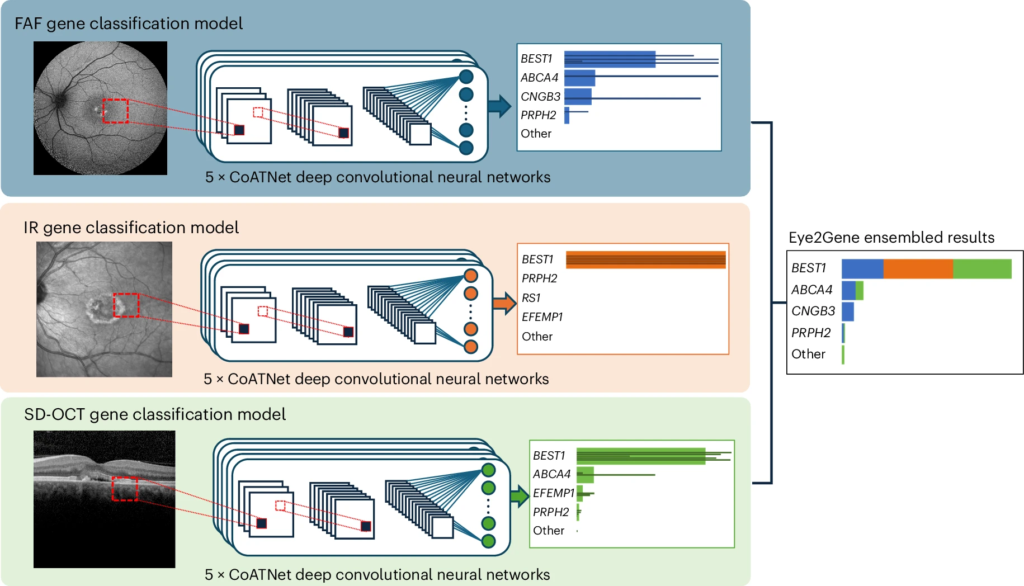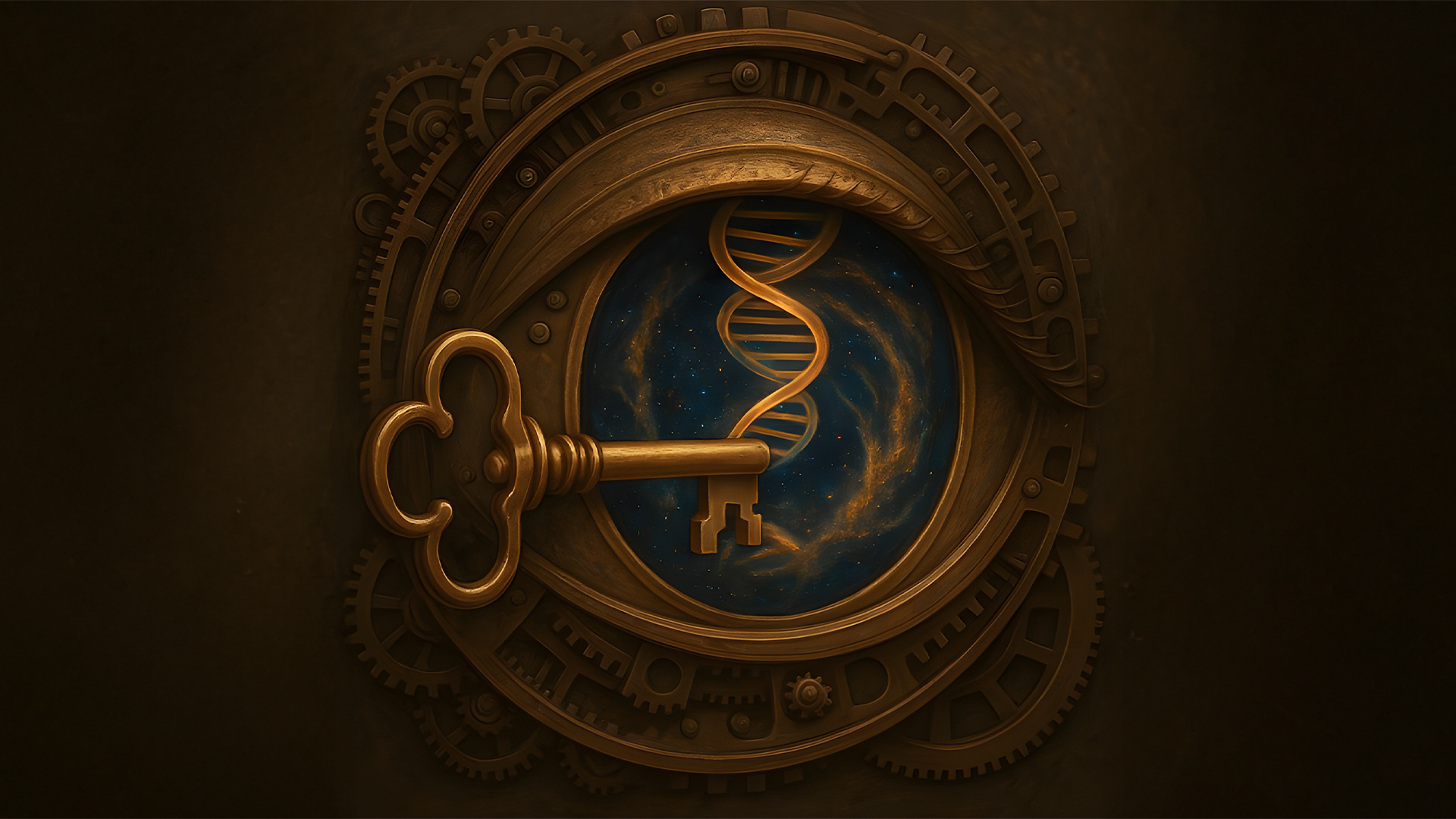The multimodal deep learning model could accelerate IRD diagnosis from standard imaging.
A neural network trained on tens of thousands of retinal scans is making waves in the search for faster, more accessible diagnosis of inherited retinal diseases (IRDs). Researchers at Moorfields Eye Hospital (London, UK) have introduced Eye2Gene, an artificial intelligence genetic diagnosis platform that can predict the underlying genetic cause of IRDs directly from standard imaging, achieving 83.9% accuracy in identifying 63 disease-causing genes.
According to a prospective study published in Nature Machine Intelligence, the results suggest that Eye2Gene could serve as a clinical decision-support tool to help ophthalmologists narrow down gene candidates and expedite genetic testing, especially in regions where access to sequencing is limited or delayed.
READ MORE: EyeCLIP and the State of Multimodal AI in Ophthalmology – PIE
AI picks up the genetic thread
Eye2Gene was developed using over 58,000 images from 2,451 patients and three imaging modalities:
- Fundus autofluorescence (FAF)
- Infrared reflectance (IR)
- Spectral-domain OCT (SD-OCT)
Instead of relying on just one type of scan, the algorithm combines input from all available imaging modalities. It then generates a ranked list of possible gene matches, along with confidence scores and visual maps that highlight the retinal features most responsible for each prediction.

In internal testing, Eye2Gene placed the correct gene in the top five predictions in 88% of cases. Across external datasets from five clinical centers, it maintained a top-five accuracy of 83.9%. For comparison, human IRD specialists averaged 29.5% top-one accuracy when asked to predict the causal gene based on imaging alone.
READ MORE: AI in Ophthalmology: Maximizing Potential while Ensuring Data Safety – PIE
Holding up across borders
To assess Eye2Gene’s relevance beyond its home dataset, researchers tested Eye2Gene in five centers across the UK, Germany, Japan, Brazil and France. Even with differences in scanning equipment and patient demographics, the model’s performance stayed consistent.
That said, the training data was primarily drawn from patients of white European ancestry and the authors noted some reduction in performance among other ethnic groups. The development team highlighted this limitation and is expanding the dataset to improve generalizability across ethnic groups.
Not just a guessing game
Eye2Gene is currently available as a research-use web app at app.eye2gene.com, where clinicians can upload multimodal retinal scans for AI analysis. The system returns a ranked list of likely disease-causing genes, complete with probability scores and saliency maps that spotlight the retinal features driving the predictions.
While not a substitute for molecular testing, the tool is designed to support clinical decision-making, particularly when access to sequencing is limited or when interpreting ambiguous variants. Beyond its gene-prediction core, Eye2Gene has shown value in several clinical and research scenarios, including:
- Screening retinal scans to flag likely IRDs
- Re-ranking uncertain genetic variants found through sequencing
- Matching phenotypically similar cases for clinical trials
- Discovering new gene-phenotype associations via clustering
READ MORE: Seeing the Unseen: Adaptive Optics Enters the Clinical Arena at ARVO 2025 – PIE
Shortcut through the diagnostic maze
Diagnosing IRDs often involves a long, costly and inconclusive journey. Eye2Gene may shorten that path considerably at a time when therapeutic options are finally catching up with genomic understanding.
The research team envisions expanding its genetic vocabulary beyond 63 genes and enhancing its ability to serve diverse populations worldwide. The group is also working to integrate AI predictions with electronic health records.
In a field where answers can take years to surface, Eye2Gene proposes a new approach: begin with the retina, translate its patterns into digital clues and follow the signals toward faster, more accessible diagnosis.
Editor’s Note: For more information, read the full Nature Machine Intelligence study here. This content is intended exclusively for healthcare professionals. It is not intended for the general public. Products or therapies discussed may not be registered or approved in all jurisdictions, including Singapore.
